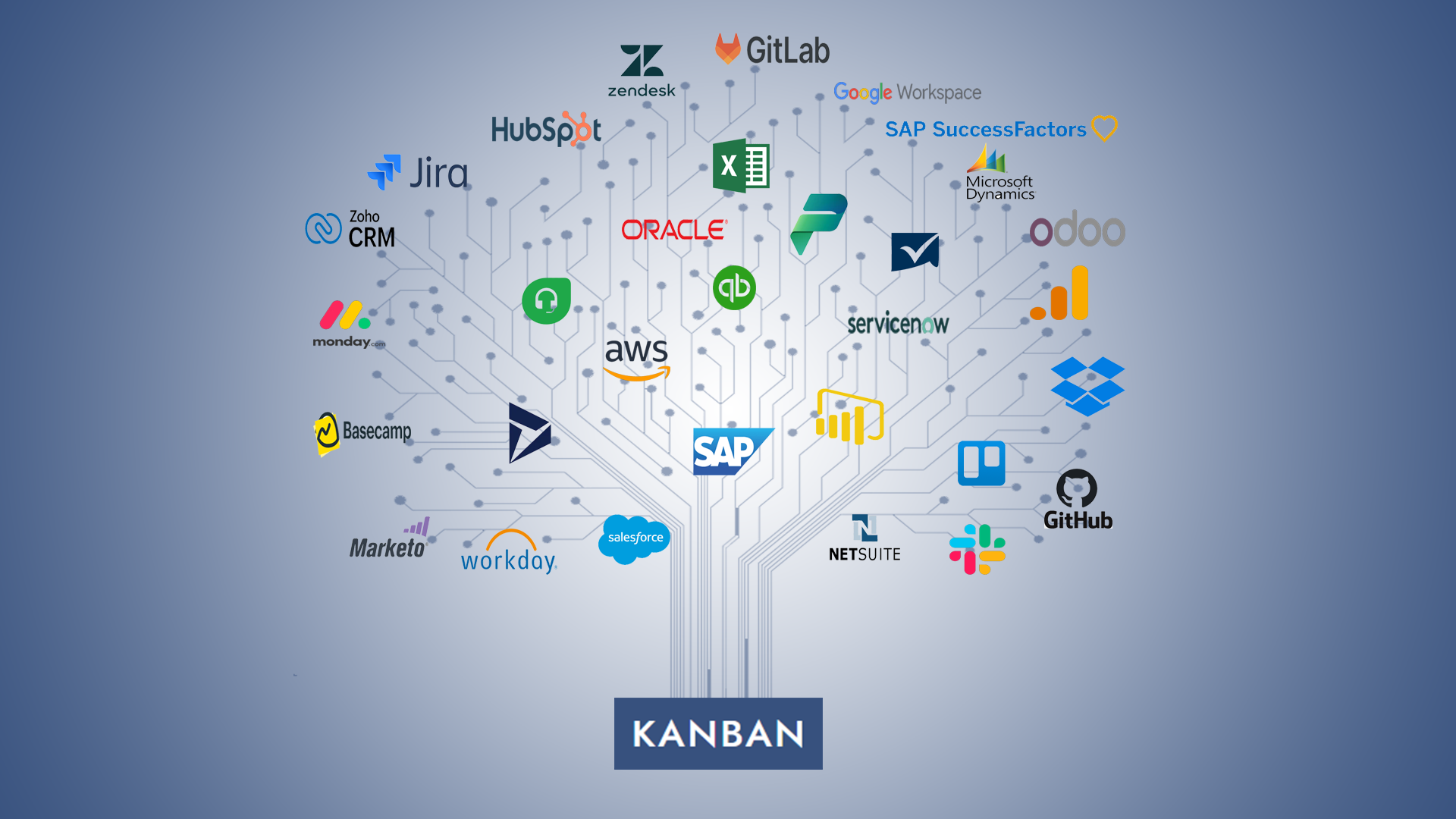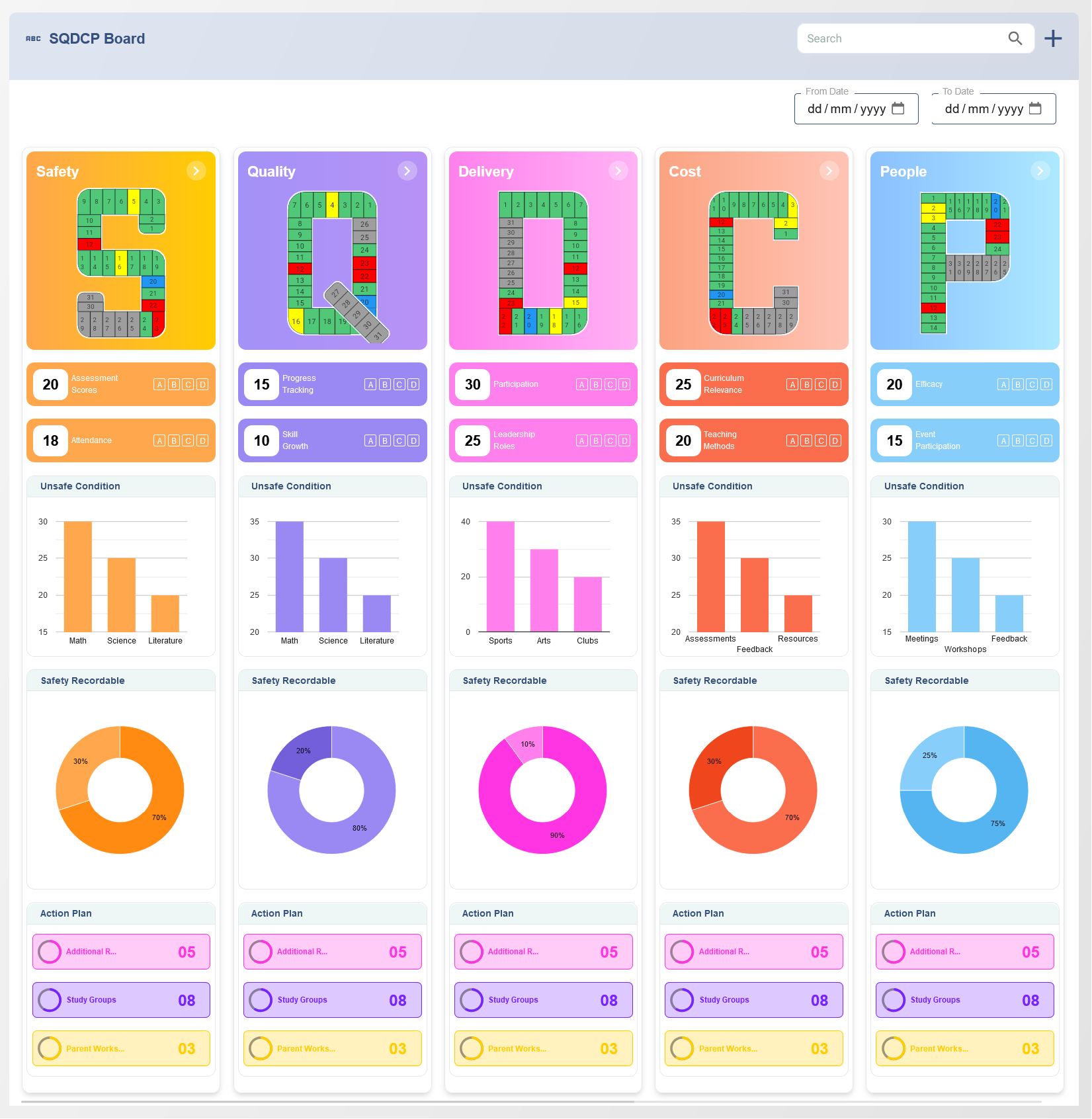In today’s fast-paced business environment, organizations need tools that not only track financial performance but also evaluate the key drivers of future success. The Balanced Scorecard (BSC) is one such tool that helps organizations track performance from four key perspectives: Financial, Customer, Internal Processes, and Learning & Growth. As organizations continue to rely on enterprise resource planning (ERP) systems to manage their operations, integrating SAP with Balanced Scorecard software provides a powerful solution for comprehensive performance management. This integration allows businesses to leverage their ERP data for real-time monitoring, strategic alignment, and improved decision-making.

What is SAP?
SAP is one of the world’s leading ERP systems, designed to help businesses manage their core operations, including finance, supply chain, procurement, and human resources. It consolidates information from different departments into a unified platform, providing businesses with accurate, real-time data to make informed decisions. With its ability to process vast amounts of business data, SAP enables organizations to streamline their workflows, improve efficiency, and reduce costs. However, for organizations seeking a more comprehensive view of their performance, integrating SAP with Balanced Scorecard software takes this a step further by adding strategic and performance management capabilities.
What is Balanced Scorecard Software?
Balanced Scorecard software is designed to help businesses translate their vision and strategy into actionable objectives and performance metrics. It provides a holistic view of the organization’s performance, encompassing four critical perspectives:
- Financial: Focuses on the organization’s financial performance, profitability, and growth.
- Customer: Evaluates customer satisfaction, loyalty, and retention.
- Internal Processes: Monitors the efficiency and effectiveness of internal business processes.
- Learning & Growth: Tracks employee development, innovation, and knowledge management.
Balanced Scorecard software helps businesses define their strategic objectives, track key performance indicators (KPIs), and monitor progress toward their goals. It ensures that everyone in the organization understands the vision, aligns their efforts, and works toward the same outcomes.
Integrating SAP with Balanced Scorecard Software
Integrating SAP with Balanced Scorecard software combines the strengths of both platforms. SAP is exceptional at managing operational data, while Balanced Scorecard software excels at strategic performance management. By linking the two, organizations can unlock valuable insights, streamline their decision-making process, and improve alignment across departments.

1. Streamlined Data Flow
The integration between SAP and Balanced Scorecard software ensures that performance data from SAP, such as financial reports, customer satisfaction scores, or operational metrics, can be automatically transferred to the Balanced Scorecard system. This seamless data flow reduces manual input and the risk of errors, enabling businesses to work with real-time data and make faster, more informed decisions. For example, financial metrics tracked in SAP can be directly linked to the financial perspective of the Balanced Scorecard, providing executives with a comprehensive view of the organization’s financial health.
2. Improved Strategic Alignment
One of the main benefits of integrating SAP with Balanced Scorecard software is improved strategic alignment. The Balanced Scorecard methodology helps organizations define and track strategic objectives across various departments. By linking SAP data with these strategic objectives, companies can ensure that every department is working toward the same goals. For example, operational data from SAP can help measure progress in improving internal processes, while customer data can track improvements in customer satisfaction. This alignment fosters a unified approach toward achieving business success and ensures that employees at all levels understand their role in the organization’s strategy.
3. Real-Time Performance Monitoring
Integration enables real-time performance monitoring by providing live data feeds from SAP into the Balanced Scorecard software. Executives and managers can track KPIs and strategic goals on customizable dashboards, ensuring they have up-to-date information at their fingertips. This real-time visibility allows for proactive decision-making, as managers can quickly identify areas of concern, such as underperforming processes or declining customer satisfaction, and take corrective action before problems escalate. Real-time performance tracking also enables businesses to adjust their strategies quickly in response to market changes or emerging opportunities.
4. Enhanced Reporting and Analytics
When SAP integrates with Balanced Scorecard software, the result is enhanced reporting and analytics capabilities. By combining the data stored in SAP with the performance metrics tracked in the Balanced Scorecard, businesses can generate more comprehensive reports. These reports can provide deep insights into how each business unit is contributing to the organization’s overall strategy, highlighting areas where performance is excelling and where improvements are needed. Moreover, the integration allows for automated reporting, reducing the time and effort required to compile data manually and ensuring that reports are always based on the latest available information.
5. Better Decision-Making
With SAP data integrated into Balanced Scorecard software, decision-makers have access to a more complete picture of the organization’s performance. This data-driven approach empowers managers to make informed decisions based on both operational performance and strategic goals. For example, if the financial perspective of the Balanced Scorecard shows strong profits but customer satisfaction is declining, managers can use the insights provided by SAP data to investigate the root causes of customer dissatisfaction and take corrective action. By considering both operational and strategic factors, businesses can make more informed, well-rounded decisions that contribute to long-term success.
Challenges of Integration
While integrating SAP with Balanced Scorecard software offers numerous benefits, there are also challenges to consider. One of the primary challenges is ensuring data consistency across both platforms. Since SAP handles vast amounts of operational data and Balanced Scorecard software focuses on strategic goals, businesses must ensure that the data shared between systems is accurate, consistent, and meaningful. This may require standardizing data formats, defining clear KPIs, and ensuring that data updates are synchronized in real time.
Another challenge is the complexity of integrating the two systems. SAP is a highly customizable platform, and businesses may need to work with IT professionals or consultants to ensure that the integration aligns with their specific needs and workflows. In addition, businesses must consider the costs of integration, including licensing, training, and ongoing maintenance, to determine if the benefits outweigh the expenses.
SAP Integrates with Balanced Scorecard Software
What is SAP Integration with Balanced Scorecard Software?
SAP integration with Balanced Scorecard software involves connecting SAP's data systems with the Balanced Scorecard framework to align business processes, performance indicators, and strategic goals in a unified platform.
How does SAP Integration with Balanced Scorecard Software benefit businesses?
It enables real-time access to performance data, enhances decision-making, streamlines reporting, and helps align business strategies with day-to-day operations by integrating strategic goals with key performance indicators (KPIs).
How can SAP and Balanced Scorecard software enhance performance management?
By providing a centralized platform for tracking and managing KPIs, SAP integration ensures that businesses monitor progress against strategic goals, improve accountability, and optimize performance across departments.
What are the key features of SAP Integrated Balanced Scorecard Software?
Key features include real-time data integration, customizable KPI dashboards, seamless reporting, automated updates, goal alignment, and performance visualization that link operational activities with business strategies.
Can SAP integrate with other business systems alongside Balanced Scorecard software?
Yes, SAP can integrate with various business systems like ERP, CRM, and HR systems, which ensures data consistency and provides a holistic view of the organization’s performance across all functions.
How does SAP integration improve data visualization in Balanced Scorecard software?
With SAP integration, Balanced Scorecard software can leverage SAP’s powerful data visualization tools to present KPIs, trends, and other performance metrics in an intuitive, graphical format that helps decision-makers quickly understand business performance.
What role does SAP play in the automation of Balanced Scorecard reporting?
SAP automation capabilities enable seamless, scheduled reporting, reducing manual work and ensuring that performance data is always up to date, accurate, and aligned with the organization’s strategic objectives.
How secure is the data when integrating SAP with Balanced Scorecard Software?
Data security is robust, as SAP uses advanced encryption, authentication protocols, and access controls to ensure that sensitive business data remains protected throughout the integration with Balanced Scorecard software.
How does SAP Integration support real-time tracking in Balanced Scorecard software?
SAP integration ensures that data is updated in real-time, allowing businesses to track KPIs and performance metrics continuously, providing immediate insights into operational efficiency and alignment with strategic goals.
What types of metrics and KPIs can be tracked through SAP and Balanced Scorecard integration?
Metrics tracked can include financial, customer, internal process, and learning & growth indicators. SAP’s integration with Balanced Scorecard software makes it easier to capture and analyze these metrics across departments.
How does SAP Integration help in aligning strategic goals with performance in Balanced Scorecard software?
By integrating data from various systems, SAP enables Balanced Scorecard software to align day-to-day operations with the broader strategic goals of the organization, ensuring that performance is measured accurately against targets.
Can SAP integration streamline decision-making processes in Balanced Scorecard Software?
Yes, by providing accurate, real-time performance data, SAP integration helps managers make faster, data-driven decisions that are aligned with the organization’s strategic objectives.
What is the cost of integrating SAP with Balanced Scorecard Software?
The cost of integration depends on the complexity of the systems involved, the size of the organization, and the specific functionalities required. Most integration services are priced on a subscription or project basis.
How can SAP Integrated Balanced Scorecard Software help with long-term business strategy?
By providing continuous monitoring and analysis of performance data, SAP Integrated Balanced Scorecard Software helps businesses adapt and adjust their strategies over time to ensure long-term success and alignment with goals.
What are the benefits of using SAP Integrated Balanced Scorecard Software for cross-departmental collaboration?
It fosters collaboration by allowing teams across different departments to access shared performance data, align their efforts with strategic goals, and engage in discussions to address gaps and optimize overall performance.